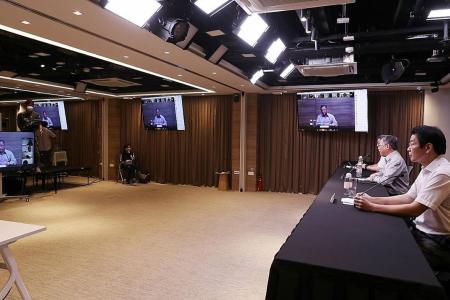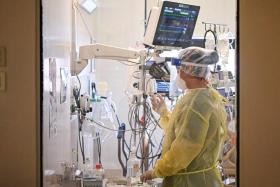‘Extensive’ plan to house recovered foreign workers: Lawrence Wong
It will include longer-term facilities that will be ready in a year or two
New sites will be developed with dormitories to house migrant workers who have recovered from Covid-19 and these will include longer-term facilities that will be ready in a year or two, said Minister for National Development Lawrence Wong yesterday.
He disclosed this when asked at a virtual press conference whether the workers would go back to living in their previous dormitories or elsewhere.
"We do have a plan to house the recovered migrant workers. It's quite extensive and it will involve new sites, new spaces that we will build," he said at the multi-ministry task force press conference.
Some of the spaces will have short to medium-term housing, but longer-term facilities are also on the cards, he added.
"So it's a whole pipeline of arrangements for the short, medium to long-term, (as we think) through holistically what is the ideal arrangement for housing our migrant workers."
As of Sunday, there were 11,419 confirmed cases in Singapore who are dorm residents, out of a total of 13,624 cases.
Most of these cases have mild symptoms and are being monitored in community facilities or general wards in hospitals.
Experts said placing these patients in such facilities will prevent acute hospital beds from being unnecessarily filled by relatively well Covid-19 patients.
Mr Wong, co-chair of the task force, had highlighted before the need for recovered workers to be housed separately.
EXPANDED
In a Facebook post on April 17, he said community care facilities at the Singapore Expo and other sites were being expanded rapidly to take care of infected workers, and additional facilities were being prepared to accommodate them after they have recovered fully and tested negative for Covid-19.
Dorm residents have accounted for the vast majority of new cases confirmed daily for a fortnight.
The Health Ministry's daily report on cases shows there are a total of 323,000 dorm residents.
Most of them, about 200,000, are housed in larger purpose-built dorms meant for communal living.
There are 43 such dorms in Singapore, and 38 of them have known clusters of infected cases.
About 95,000 workers are housed in about 1,200 smaller factory-converted dorms, most of which have fewer than 50 residents. The others live in on-site housing, which includes temporary quarters at construction sites.
Since last week, about 10,000 foreign workers in essential services have been taken out of dorms and put up at alternative abodes, such as vacant Housing Board flats, floating hotels and military camps. The move is to reduce the density of workers in dorms while allowing them to continue working.
Get The New Paper on your phone with the free TNP app. Download from the Apple App Store or Google Play Store now


